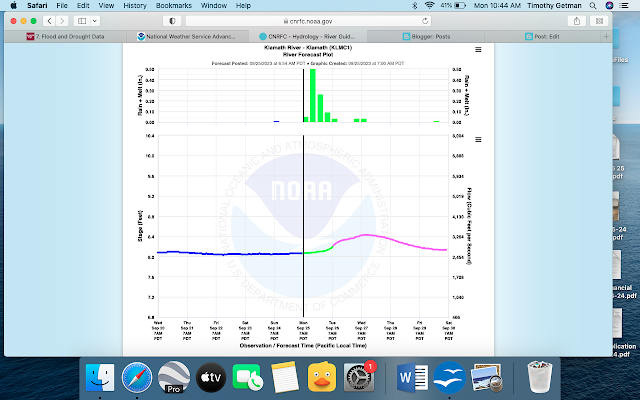Klamath River Flood and Drought Data

So, this was fun to look at the different present and historical data from the river. Coincidentally, there is A LOT of rain forecast for this week in the region, so I was interested to see what was going on on the Klamath. There actually is a flood watch but not for the river itself. Many streams and hillsides are covered in burn scars and debris from the recent fires in the area, so there is risk of tributary streams and creeks clogging and filling up but not the river itself. I looked at the the NWS link for Advanced Hydrologic Prediction https://water.weather.gov/ahps2/index.php?wfo=mfr and the California Nevada River Forecast Center (CNRC) https://www.cnrfc.noaa.gov/graphicalRVF.php?id=SEIC1 . Both use NOAA data and are set up a little differently, but similarly show the present week and forecast (screenshot 1), historical flood or crest data (screenshot 2), and what kind of impacts different river levels would have on the area. I have so many screenshots below because the Klam
